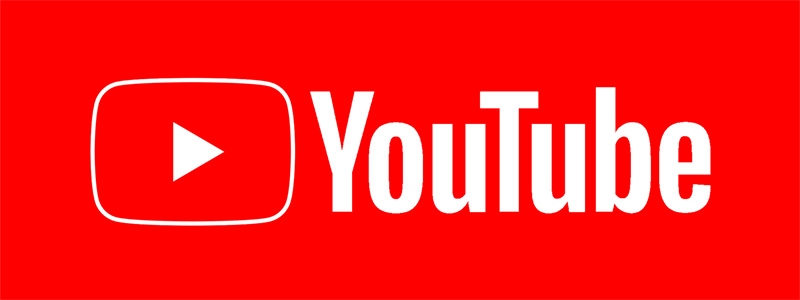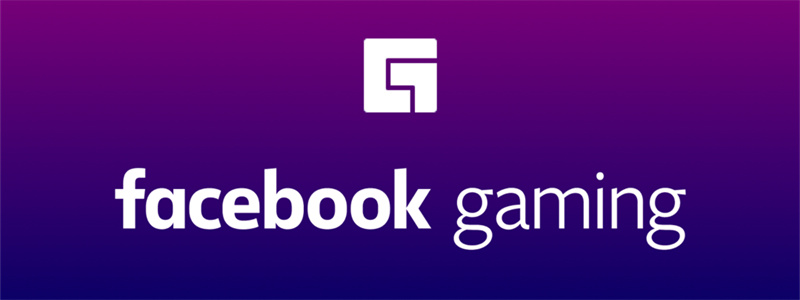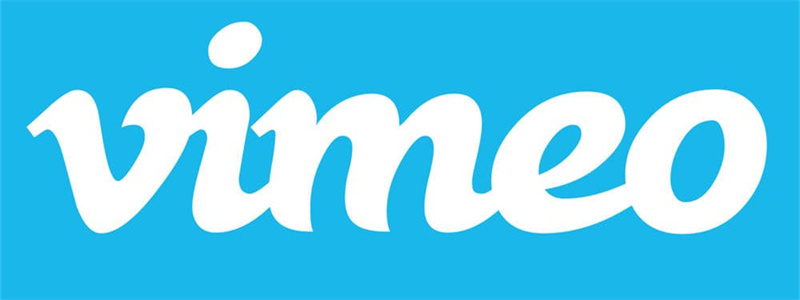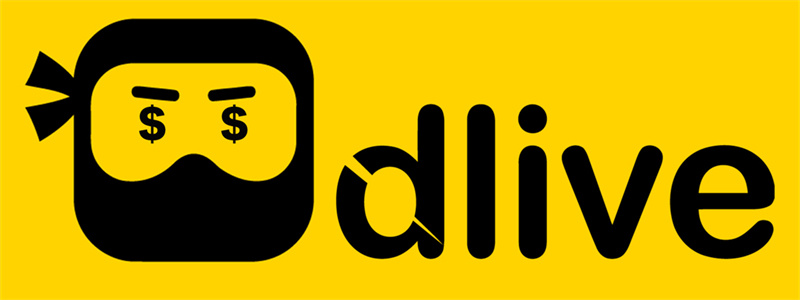The Ultimate Streaming Setup Guide for Beginners
Streaming is the most popular way to consume content with platforms like Twitch, YouTube, and Facebook Live. Anyone can become a content creator and share their passion with the world if they know the best ways to stream.
The good news is that you can skip being a tech expert to get started with streaming. With some essential equipment for live streaming and know-how, you can create a professional-looking stream to impress your audience. That's why we've put together this ultimate streaming setup guide for beginners.
In this guide, we'll go through everything you need to know to create the perfect setup stream, including the essential equipment you'll need, how to set up your streaming software, and how to optimize your stream for the best performance. We'll also cover tips and tricks for making your stream stand out and attract viewers.
So, if you want to stream games, music, or other content, this guide will provide all the information, and by the end, you'll be well on your way to creating high-quality streams that will push your viewer to come back for more.
Part 1. Essential Equipment for Live Streaming
You don't need expensive equipment for a live-streaming channel, but a few essential items to get started.
Here are some of the basics:
1. Computer
A reliable computer is the backbone of your streaming setup. A laptop with a powerful processor, enough RAM, and a dedicated graphics card will ensure that your stream runs smoothly without lag or interruptions.
2. Camera
Your camera is one of the most important pieces of a live streaming setup—it's how viewers connect with you face-to-face. A clear, stable, and natural-looking image instantly makes your stream feel more professional and trustworthy, even if you're just starting.
For beginners, you don't need a complex multi-camera system. What you need is a camera that delivers high-quality video, works reliably with streaming software, and is easy to set up.
A great example is the OBSBOT Tail Air Streaming Camera, which strikes an excellent balance between performance and simplicity. Designed specifically for live streaming, it helps creators produce polished, dynamic visuals without technical headaches.
Key Features:
- Professional-Grade Video Quality: OBSBOT Tail Air offers outstanding 4K video resolution and clarity, ensuring your audience sees every detail in stunning quality.
- Advanced AI Tracking: With cutting-edge AI technology, OBSBOT Tail Air automatically detects and follows the subject, allowing for dynamic movement and interaction during streams without losing focus.
- Simple Setup and Integration: Designed with user convenience in mind, OBSBOT Tail Air integrates seamlessly with your current streaming setup, enabling quick and hassle-free installation.
- Stream Anywhere, Anytime: Compatible with multiple streaming platforms and offering various customization options, OBSBOT Tail Air provides you with the flexibility to stream content the way you want.
- Portability for On-the-Go Streaming: Compact and easy to transport, OBSBOT Tail Air is perfect for streamers who need to set up quickly in different locations, ensuring you can stream wherever you are.
Overall, the OBSBOT Tail Air is an excellent choice for streamers who need a 4k PTZ streaming camera.
3. Microphone
A high-quality microphone is also essential for streaming room setup, ensuring your voice comes through clearly and crisply. Many options exist, from affordable USB microphones to more professional-grade XLR microphones.
4. Reliable internet connection
A fast and reliable internet connection is a crucial setup for streaming, ensuring your stream runs smoothly and without interruption. Ideally, you'll want a wired connection, but if that's not possible, ensure you're using a high-quality Wi-Fi router and close to it.
Recommendations for affordable and beginner-friendly equipment options
In terms of affordable and beginner-friendly options, plenty of choices are available, like OBSBOT Tail Air. The Blue Yeti and Audio-Technica AT2020 are great options for microphones that won't break the bank. And for computers, you don't necessarily need a top-of-the-line machine – a mid-range PC or laptop should suffice.
Ultimately, the key is to start with the basics and upgrade as you go along. As your channel grows and you start making more money from your streams, you can invest in more advanced equipment to take your streams to the next level.
Part 2. Choosing the Right Platform
When choosing a streaming platform, consider the type of content you want to create and the audience you want to reach. Here's an overview of some of the most popular streaming platforms, their pros and cons, and how to choose the right one.
1. Twitch

Twitch is the most popular gaming streaming setup, with a large and engaged community. It's known for its interactive features like chat, emotes, and channel points.
Pros:
- A large and engaged community
- Interactive features such as chat emotes, and channel points
- Built-in monetization options for affiliates and partners
Cons:
- Competitive and challenging to grow your audience
- Limited to gaming and creative content
- Content moderation can be strict and inconsistent
How to choose Twitch:
If you're primarily interested in streaming games or creative content, Twitch is a great choice. It's also a good option if you want to engage with an active and passionate community.
2. YouTube

YouTube is the world's most extensive live streaming gear, with over 2 billion active users. It's known for its searchability and algorithmic recommendations, which can help your content reach a larger audience.
Pros:
- A large and diverse audience
- Excellent searchability and algorithmic recommendations
- Built-in monetization options for creators
Cons:
- Live streaming features are not as robust as Twitch's
- Difficult to get noticed
- Content moderation can be strict and inconsistent
How to choose YouTube:
If you're interested in reaching a large and diverse audience and are willing to work to create high-quality content, YouTube is a good choice. It's also an excellent option to leverage the platform's searchability and algorithmic recommendations to grow your audience.
3. Facebook Gaming

Facebook Gaming is a relatively set streamer that's integrated with Facebook's social network. It's known for its discoverability and ease of use, but it's still growing its community and features.
Pros:
- Integrated with Facebook's social network
- Good discoverability and ease of use
- Built-in monetization options for creators
Cons:
- Smaller and less engaged community than Twitch or YouTube
- Limited features compared to Twitch or YouTube
- Content moderation can be strict and inconsistent
How to choose Facebook Gaming:
If you're already active on Facebook and have a large following there, Facebook Gaming could be a good choice. It's also good if you're looking for a platform that's easy to use and has built-in monetization options.
4. Vimeo

Vimeo is a livestream setup known for its high-quality, ad-free content. It's not a dedicated streaming platform, but it does offer live streaming as part of its video hosting services. It does have a loyal following of creators who value its ad-free experience and focus on high-quality content.
Pros:
- Ad-free experience
- Focus on high-quality content
- Built-in analytics and privacy settings
Cons:
- Not a dedicated streaming platform
- Smaller audience than other platforms
- Limited monetization options
How to choose Vimeo:
For a high-quality, ad-free experience and to focus on creating visually stunning content, Vimeo could be a good choice. However, it's not a dedicated streaming platform with a smaller audience, so those looking to grow their following or reach a wider audience may opt for others.
5. DLive

DLive is a blockchain-based streaming setup focused on content creators and their communities. It aims to provide a more transparent and decentralized platform for live streaming. DLive also has a unique revenue-sharing model, where content creators receive a portion of the platform's revenue based on their engagement and contributions to the community.
Pros:
- Decentralized and transparent platform
- Unique revenue-sharing model
- Focus on community building
Cons:
- Smaller audience than other platforms
- Limited monetization options
- Requires a cryptocurrency wallet to withdraw earnings
How to choose DLive:
If you value transparency, community building, and a unique revenue-sharing model, DLive could be a good choice. However, it's a relatively new platform with a smaller audience, so it might not be the best to reach a wider audience or monetize content more effectively. Additionally, the requirement of a cryptocurrency wallet might be a hurdle for some creators.
Part 3. Streaming Software and Settings
There are several popular options for streaming setup, each with its strengths and weaknesses. Here's a closer look at some:
- OBS Studio: OBS Studio is a free, open-source software popular among beginners and experienced streamers. It's highly customizable with a wide range of features, including capturing gameplay footage, adding overlays and alerts, and configuring audio settings.
- Streamlabs OBS: Streamlabs OBS is a user-friendly streaming software designed to be easy for beginners. It's similar to OBS Studio in terms of functionality, but it comes with a range of pre-built overlays, alerts, and other graphics for your stream with just a few clicks.
- XSplit: XSplit is a paid streaming software popular among professional streamers. It offers many features, including capturing footage from multiple sources, adding custom graphics and effects, and using advanced audio settings.
- Zoom: While Zoom is primarily a video conferencing software, while can also work for live streaming. It's a popular choice for webinars and other live events, and it offers a range of features that make it easy to set up and manage a stream.
- Livestorm: Livestorm is a web-based streaming platform designed for hosting live webinars and other events. It's easy to use and offers a range of features, including customizable registration pages, automated email reminders, and analytics tracking.
Here's a basic overview of how to set up your streaming software:
- Download and install the software: The first step is to download and install your chosen streaming software. Most software options have clear and easy-to-follow installation instructions.
- Configure audio settings: Once you've installed the software, you must configure your audio settings. This typically involves selecting your audio input device (such as a microphone) and adjusting your audio levels to ensure that your audio is clear and balanced.
- Configure video settings: This will involve selecting your video input device (such as a camera) and adjusting your video resolution and frame rate.
- Add overlays: Overlays are graphics overlaid on top of your gameplay footage, like your logo, a chat box, or a camera frame. Most streaming software options make it easy to add overlays by providing drag-and-drop functionality.
- Capture gameplay: Select your game as your video source in the streaming software to capture your gameplay footage. Most software options have automatic detection, but you can manually choose your game if needed.
- Test and adjust settings: Now, test your stream before going live. Adjust your audio, video, and overlay settings to ensure everything works correctly.
While PC streaming setup may seem overwhelming initially, most streaming software options have clear and easy-to-follow instructions to help you.
So, we have some tips for optimizing your IRL stream setup, which include:
- Lowering your stream resolution: Streaming at a lower resolution can help reduce the strain on your computer and internet connection, leading to smoother performance.
- Adjusting your bitrate: The bitrate determines the data sent from your computer to the streaming platform. Adjusting your bitrate can improve the quality of your stream and reduce buffering.
- Testing your connection speed: Before you start streaming, test your internet connection speed to ensure it's fast enough to handle the streaming demands.
- Closing unnecessary applications: Closing any extreme applications or processes running in the background can help free up system resources and improve streaming performance.
These tips can ensure your live streams are smooth, high-quality, and enjoyable for your audience.
Part 4. Creating Engaging Content
Creating engaging content is crucial for attracting and retaining viewers in the competitive streaming world. With so many options available to viewers, standing out and providing entertaining and informative content is vital.
The importance of creating engaging content includes:
- Engaging content can keep viewers interested and invested in your stream, leading to increased watch time, more followers, and higher engagement. This can help you build a community of dedicated viewers who tune in regularly to watch your content.
- Viewers can tell when a streamer is genuine and passionate about their content, which can help build a strong connection with your audience. So, choose topics and games you are genuinely interested in, as this will come across in your content and make it more enjoyable for viewers to watch.
- A consistent theme or focus for your stream is essential, but adding variety can help keep things fresh and exciting for viewers. Playing different games or including various types of content, such as interviews, Q&A sessions, or live events.
- Responding to comments and questions in real-time, hosting giveaways or contests, and encouraging viewers to participate in the chat all help develop a sense of community and make your streams more enjoyable for everyone involved.
Overall, creating engaging content before streaming setup requires a combination of authenticity, variety, and audience interaction. By focusing on these critical factors, you can attract and retain viewers, build a dedicated community, and grow your streaming career.
Here is how to create exciting content after streaming setup:
- Plan and organize your streaming sessions: Set a schedule for your streams and choose content themes to provide your audience with a more consistent viewing experience. You can also plan specific segments for your stream, such as Q&A sessions or gameplay tutorials.
- Interact with your viewers: Respond to viewer comments and questions in real-time to create a sense of community and make your viewers feel more invested in your content.
- Use interactive elements: Chatbots, alerts, and other interactive elements can enhance the streaming experience by providing viewers with additional ways to engage with your content. For example, a chatbot can help answer common questions, while alerts can notify viewers of new subscribers or donations.
- Focus on quality: Make sure your stream looks and sounds professional by investing in high-quality equipment and testing your settings before going live. This can help ensure viewers have a positive viewing experience and are more likely to return for future streams.
Overall, creating engaging content is about providing value to your viewers and making your streams as enjoyable and interactive as possible.
The use of chatbots, alerts, and other interactive elements:
Let us now see how chatbots, alerts, and other interactive features can enhance the streaming experience by making it more engaging and interactive for viewers.
These tools help you connect with your audience and create a community during your stream.
- One popular tool is chatbots, which can be programmed to react to specific commands or keywords in the chat. For example, a chatbot can be set on a streamer to automatically thank new followers or subscribers, provide links to your social media pages, or answer frequently asked questions.
- Alerts are another way to make your stream more interactive. These can include notifications for new followers, subscribers, donations, or other events during your stream. These alerts can be customized to fit visual and audio cues, making them more eye-catching and attention-grabbing for viewers.
- Other interactive elements include polls, trivia games, and other games viewers can participate in during the stream. These tools help create a sense of community and encourage viewers to connect with your content and each other.
Use these streamer setups in a way that enhances the streaming experience and is manageable for viewers. For example, alerts and chatbots should be informative and helpful rather than spamming the chat with unnecessary messages. Additionally, monitoring the conversation and ensuring viewers follow the rules and respect each other is essential.
Part 5. Engaging with Viewers
Building a community and engaging with viewers after the streaming room setup is crucial to the success of any streaming channel. Here are some reasons why:
- Retention of viewers: When viewers feel connected to a streamer, they are more likely to return for future streams and become regular viewers.
- Growth of the channel: Positive interactions with existing viewers can lead to word-of-mouth recommendations, bringing in new viewers who may have yet to discover the channel.
- Feedback and improvement: Engaging with viewers can also provide valuable feedback on the quality of the stream and content. Viewers may offer suggestions or critiques that can help improve the quality of the channel.
- Monetization opportunities: Building a community and engaging with viewers can also lead to monetization opportunities, such as donations and subscriptions.
Tips on how to interact with viewers during streams:
Interacting with viewers during streams is essential for building a community and connecting with your audience. Following are some tips on how to engage with viewers during streams effectively:
- Respond to comments: Take the time to read and respond to them to show your viewers that you value their input and are interested in what they say.
- Address questions: Encourage viewers to ask questions and take the time to answer them during the stream to build trust and establish you as an expert in your field.
- Use a moderator: Consider appointing a moderator to help manage the chat during streams. A moderator can help keep the conversation civil and remove inappropriate comments or spam.
- Set clear boundaries: Establish clear rules and boundaries for your chat and make them visible to viewers to prevent disruptive behavior and maintain a positive, welcoming environment for all viewers.
- Use interactive elements: Incorporate interactive features into your streams, such as polls or chat games, to encourage engagement and participation.
- Show appreciation: Thank viewers for their support and show appreciation for their engagement to foster a sense of community and encourage viewers to continue tuning in.
What are the advantages of networking with other streamers and collaborating with them?
Networking with other streamers and collaborating with them can have several benefits for your streaming channel, including:
- Exposure: Collaborating with other streamers can help expose your channel to a new audience, attract new viewers, and grow your community.
- Learning opportunities: You can learn new techniques, strategies, and approaches to streaming by observing and collaborating with other streamers.
- Support: Streaming can be a lonely pursuit, and having a network of fellow streamers can help to provide a sense of community and belonging.
- Cross-promotion: Collaborating with other streamers can also help to cross-promote each other's channels. Promoting each other's channels can drive traffic and viewership to both channels.
- Creative inspiration: Collaborating with other streamers can help to spark creative inspiration and generate new ideas for content. By working together, you can generate new and unique ideas that might not have been possible on your own.
Part 6. Monetization and Promotion
Monetization is vital for many streamers who want to turn their passion into a career. Fortunately, you can monetize a streaming channel and earn income from your content in several ways after the livestream setup.
- A common way to monetize a streaming channel is through ads. Platforms like Twitch and YouTube offer ad revenue-sharing programs, where streamers can earn some of the revenue generated by ads shown during their streams.
- Another popular monetization method is donations. Viewers can donate money to the streamer through various payment methods, such as PayPal or credit cards. Some platforms even have built-in donation systems that make it easy for viewers to support their favorite streamers.
- Subscriptions are another way to monetize a streaming channel. On platforms like Twitch, viewers can subscribe to a channel for a monthly fee, which unlocks various perks like ad-free viewing, custom emotes, and other benefits.
- Sponsorships and brand deals can also be a lucrative source of income for streamers. Brands may be interested in sponsoring a streamer if they have a solid following and align with the brand's values and target audience. This can involve promoting a product or service during a stream or creating sponsored content that integrates the brand into the stream.
- Promote your streaming channel and build a solid following through social media promotion, networking with other streamers and content creators, and cross-promotion with other channels and communities.
- In addition, establish a strong brand and unique identity for your streaming content by creating a consistent visual style, developing a unique voice and personality, and focusing on specific content themes or genres.
Part 7. Troubleshooting and Tips
Streaming can sometimes be tricky; even experienced streamers can encounter technical difficulties. Here are some troubleshooting tips for common issues that beginners may encounter during streaming:
- Dropped frames: Dropped frames can occur when your internet is not strong enough to support the bitrate of your stream. To troubleshoot this issue, try lowering your bitrate, closing any unnecessary applications or browser tabs, and reducing the resolution of your stream.
- Audio syncing issues: Audio syncing issues can occur when there is a delay between your stream's audio and video components. To fix this issue, try adjusting the audio delay in your streaming software or syncing your audio manually by clapping or making a loud noise in front of your microphone and aligning it with the corresponding visual cue in your video footage.
- Network problems: To troubleshoot this issue, try resetting your router, reducing the number of devices connected to your network, or connecting your computer directly to your router with an Ethernet cable.
- Test your setup: Always do a test stream before going live to ensure your equipment for live streaming functions properly. Check your audio and video quality, test your network connection, and ensure that your overlays and other visual elements work as intended.
- Stay up to date: Keep your streaming gear and drivers updated to ensure that you are using the latest version and are not missing out on any critical bug fixes or new features.
A few best practices for live stream setup include:
- Create separate folders for different kinds of assets (such as overlays, graphics, and sound effects), keep backup copies of essential files, and use consistent naming conventions to make it easy to find what you need.
- It's also good to create different scenes for different types of content and to use hotkeys to switch between them seamlessly during your stream. This can help keep your streams visually engaging and prevent your viewers from getting bored.
- Take the time to configure your streaming software correctly for optimal performance, like setting the appropriate bitrate for your internet connection, adjusting audio levels and filters, and tweaking graphics settings to ensure smooth gameplay and high-quality visuals.
- These actions will ensure that your streams run smoothly and look professional, helping you build a loyal audience and grow your channel over time.
Additional tips and tricks for beginners
Here are some more tips and tricks for beginners to enhance their streaming setup and improve their overall streaming experience:
- Test your setup: Before you start live streaming, test your streaming setup to avoid technical issues during your stream and give you peace of mind.
- Practice, practice, practice: The more you stream, the better you'll get at it. Take the time to practice and refine your content; don't be afraid to experiment with new ideas and formats.
- Engage with your audience: During your stream, interact with your audience, respond to comments, answer questions, and engage with your viewers.
- Be consistent: Establishing a consistent streaming schedule can help you build a loyal audience and keep viewers returning for more.
- Learn from other streamers: Watch and learn from successful streamers in your niche. Please pay attention to their content, engagement strategies, and overall approach to streaming.
- Stay up-to-date with trends and best practices: The streaming landscape is constantly evolving, so stay up-to-date with the latest trends and best practices. Keep an eye on industry news and be willing to adapt and evolve your content over time.
By following these, beginners can enhance their streaming setup, improve their overall streaming experience, build a successful streaming channel, and engage with an enthusiastic audience.
Part 8. FAQs about Streaming Setup
1. How much does a full streaming setup cost?
A full streaming setup can vary in cost depending on the quality and features you desire. A basic setup can cost around $500, while a more advanced setup with high-quality equipment can cost up to $2000 or more.
2. Do I need two monitors to stream?
You don't necessarily need two monitors to stream, but having a second monitor can be helpful for monitoring chats, alerts, and other streaming elements without disrupting your main gameplay or content.
3. How much Wi-Fi do I need to stream?
The amount of Wi-Fi needed to stream depends on the quality of your stream. For standard definition streaming, a minimum of 3-4 Mbps is recommended, while for high definition streaming, 5-10 Mbps or more may be required.
Conclusion
Thus, we hope you know how to set up stream the best way to launch yourself as a content creator. We provided well-researched information on engaging with your viewers and the best gear, including the dual PC streaming setup.
So, create your Twitch, YouTube, etc., account today and go livestream with budget streaming setup equipment like OBSBOT Tail Air right away!

















